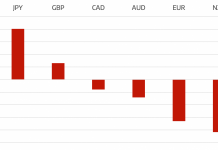
Even after the success of Jones experiment, it would not exactly be correct to say that an industry had risen. For hedge funds to qualify as an industry that stands on its own merits, it would be necessary that a number of hedge funds were created and that they were efficient in reaching their goals.
As we have already discussed in the previous segment, this did not seem to be the case in the years that immediately followed the setup of the first hedge fund. What was essentially lacking was awareness, as people did not seem to know much about the hedge fund itself, or about how successful it had come to be. The second reason that the scheme did not attract much attention was because people in general tend to be quite averse to risk, especially when it comes to their hard-earned money. They need to be eased into the process, which can only be done if an authority they trust promotes it or vouches for it.
Fortune magazine once again comes back into the picture at this point and plays a huge role in shaping the financial future. In 1966, they went onto publish another article about a financial investment mechanism that was relatively new on the horizon. The article talked about how a certain fund had been extremely triumphant in leaving behind all other mutual funds, and that by a huge and unbelievable margin. This article set off a chain reaction of hedge funds; at the end of the next two years, there were around 140 functioning hedge funds.
Unfortunately, as history has shown us repeatedly, this success was not meant to last for too long. A noteworthy number of people saw an even greater potential and felt that returns could be further increased by making a couple of changes to their plan of action. For this reason, they shifted their strategies to include riskier moves that would bring in larger benefits if it all went along smoothly.
This theory backfired when applied in the real world. From 1969 until almost the mid-1970s, major losses and reduced profits were faced by investors. Many hedge funds faced extremely difficult struggles to survive; thus, not surprisingly, most of these failing hedge funds simply died away.
It was not until 20 years later, in the year 1986, that hedge funds made an impressively strong comeback. Once again, the incentive to dive into this industry was provided by a high profile hedge fund known as Julian Robertsons Tiger fund. It was doing well enough to catch the eye of investors and money managers alike. This trend was also supported by the fact that there were now more plans available to give the maximum amount of options and benefits for all involved.
However, this was also short lived; the turn of the century brought with it another downfall for the fate of the industry. Despite all these ups and downs, the hedge fund industry has managed to perpetuate into todays market and has undergone many significant changes.
One of the most recent changes has resulted in the development of the funds of funds concept, which has merged mutual funds with hedge funds. This allows people to invest in mutual funds, which are used to invest in hedge funds. By doing so, they have made hedge funds accessible across a wider population and have lowered both the cost of investment as well as the level of risk involved.
Given the turbulent history of hedge funds, most governments and policy makers have tried to decrease the amount of uncertainty involved by introducing regulations and laws that aim to keep the industry under a comparatively stricter check.
It has been suggested that approximately 9000 hedge funds are currently operating around the world, and all these hedge funds make use of various different strategies to help them gain returns on investment. This industry seems to have a bright future, although nothing can be said regarding how or when things may change for the worse.
Related posts on The History of Funds and Hedge Funds:
Part 4 – The Beginning of the Hedge Fund and the Man behind it
Part 3 – Expansion of the Mutual Fund Industry and Its Regulation
Part 2 – The beginning of the Mutual Fund
Part 1 – Introduction : Types of Mutual Funds
HedgeThink.com is the fund industry’s leading news, research and analysis source for individual and institutional accredited investors and professionals







































